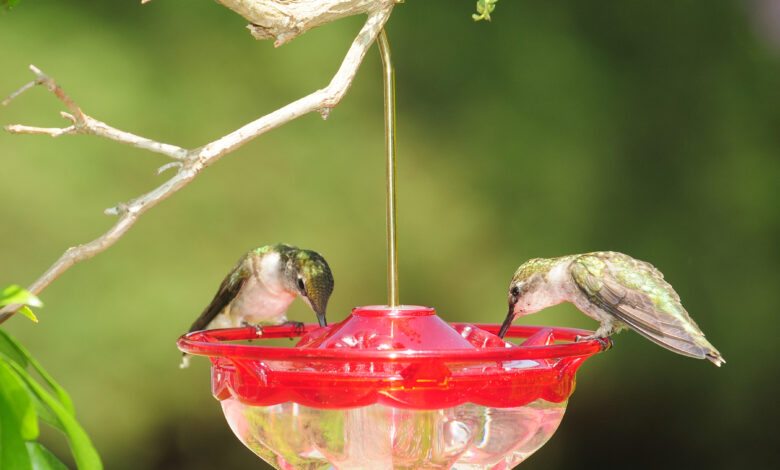Hummingbird Feeders and More: Best Options for All Kinds of Birds

Birdwatching is a delightful way to connect with nature, and the right bird feeder can transform any outdoor space into a lively sanctuary for feathered friends. While hummingbirds captivate us with their vibrant colors and swift movements, countless other bird species bring joy with their songs and behaviors. Providing the birdfy vs bird buddy right type of feeder ensures that your yard is a welcoming spot for a diverse range of birds. From specialized hummingbird feeders to versatile options for larger species, this guide will help you choose the best feeders to attract all kinds of birds.
Hummingbird Feeders: Designed for Delicacy
Hummingbirds are unique among backyard birds due to their preference for nectar. These tiny, energetic creatures feed on the sweet best rated bird feeder camera in 2024 liquid found in flowers, and a hummingbird feeder replicates this experience. Typically made from glass or plastic, hummingbird feeders come equipped with ports that allow the birds to sip nectar safely.
The best hummingbird feeders often have bright red accents to attract these birds, as red mimics the color of many flowers they naturally visit. Glass feeders are an eco-friendly and durable choice, while BPA-free plastic options offer lightweight convenience. Look for feeders with an ant moat or bee guards to prevent other insects from accessing the nectar. Regular cleaning is essential to prevent fermentation or mold, which can harm the birds.
Tube Feeders: A Universal Choice for Seed-Loving Birds
Tube feeders are one of the most versatile bird feeder designs, suitable for attracting a variety of seed-eating birds, including finches, chickadees, and sparrows. These feeders consist of a cylindrical tube with multiple perches and feeding ports, making it easy for multiple birds to dine simultaneously.
For those who wish to attract specific species, the type of seed you use is key. Nyjer seed, for example, is highly appealing to best camera for bird feeder pictures finches, while sunflower seeds attract a broader range of birds. Opt for a tube feeder with a sturdy design, made from metal or recycled plastic, to ensure longevity. Models with removable bases make cleaning and refilling a breeze.
Platform Feeders: Open Invitation to All Birds
Platform feeders, also known as tray feeders, offer an open design that accommodates a wide range of birds, from small songbirds to larger species like doves and jays. These feeders are flat surfaces where seeds, fruits, or even mealworms can be spread out, allowing birds to perch comfortably and feed at their own pace.
While their open design makes platform feeders versatile, it also leaves the food exposed to the elements. Look for models with a roof or drainage holes to prevent spoilage during rainy weather. Wooden platform feeders are a popular choice, blending naturally into the landscape and offering a sustainable feeding option.
Suet Feeders: Energy Boost for Cold Weather Birds
Suet feeders are essential for attracting birds during colder months when energy demands are high. Suet, a dense mix of fat and seeds, provides a rich source of calories that helps birds maintain their body heat. Suet feeders are typically cage-like structures designed to hold suet cakes securely while allowing birds to peck at the food.
Woodpeckers, nuthatches, and wrens are among the birds that flock to suet feeders. For an eco-friendly option, choose feeders made from recycled materials or untreated wood. Place the feeder in a shaded area to prevent the suet from melting in warm weather.
Hopper Feeders: A Classic for All Seasons
Hopper feeders are a staple in many backyards, thanks to their large capacity and ability to accommodate a variety of bird species. These feeders feature a container that dispenses seeds into a tray as birds feed, ensuring a steady supply of food. Their enclosed design protects seeds from rain and wind, making them ideal for all seasons.
Wooden hopper feeders are a sustainable choice, offering a natural aesthetic and durability. Opt for models with clear sides to monitor seed levels easily and a roof that opens for convenient refilling. The versatility of hopper feeders makes them a favorite among bird enthusiasts looking to attract diverse species.
Nectar Feeders: Beyond Hummingbirds
While nectar feeders are most commonly associated with hummingbirds, orioles and other nectar-loving birds can also benefit from these feeders. Larger nectar feeders designed for orioles often include orange accents and perches that accommodate their size. These feeders may also have compartments for offering fruit or jelly, broadening their appeal to other species.
To ensure your nectar feeders remain attractive and safe for birds, keep them clean and refill them with fresh nectar every few days. Avoid using dyes in homemade nectar solutions, as they can be harmful to birds.
Window Feeders: Up-Close Encounters
For those who want to observe birds from the comfort of their home, window feeders provide an excellent solution. These feeders attach directly to windows using suction cups, offering a close-up view of birds as they feed. They are perfect for families with children or individuals living in apartments without large outdoor spaces.
Window feeders come in various designs, including trays for seeds or small compartments for nectar. Look for durable, easy-to-clean models to ensure a hassle-free birdwatching experience.
Choosing the Right Feeder for Your Needs
Selecting the best feeder depends on the types of birds you wish to attract and the environment in which the feeder will be placed. For a balanced approach, consider using multiple feeder types to cater to different species. A hummingbird feeder can provide nectar for delicate birds, while a platform or hopper feeder can cater to seed-eating species. Suet feeders can be added during the winter months, and window feeders offer an intimate birdwatching experience.
Conclusion
Bird feeders not only bring life and color to your backyard but also play a vital role in supporting local bird populations. From specialized hummingbird feeders to versatile options like platform and tube feeders, there are countless choices to suit every birdwatcher’s needs. By choosing the right feeder and maintaining it properly, you can create a welcoming haven for birds of all kinds, ensuring hours of enjoyment and a thriving backyard ecosystem. So, whether you’re a seasoned bird enthusiast or a curious beginner, explore the world of bird feeders and discover the joy of sharing your outdoor space with these delightful creatures.




